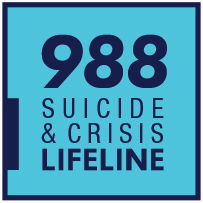Suicide Prevention: Primary Care Is a Crucial Setting for Identifying Risk
More people died from suicide in the United States in 2022 than any other year on record, according to provisional data from the CDC. In 2022, more than 49,000 lives were lost due to intentional self-harm—more than 14 deaths for every 100,000 people. The data for 2021 also show that suicide was the 11th leading cause of death, and provisional data for 2022 show no change in that ranking.1
Additionally, the American Foundation for Suicide Prevention (AFSP) reported the following statistics from 2021:2
- On average, 132 suicides take place each day.
- Men died by suicide 3.90 times more than women.
- The rate of suicide is highest in middle-aged White men.
- White males accounted for 69.68 percent of suicide deaths.
- Firearms account for 54.64 percent of all suicide deaths.
AFSP also provides state-specific statistics.
Primary Care Interactions Present a Unique Opportunity
Most Americans receive their healthcare from primary care physicians or advanced practice clinicians (APCs). These frequent contacts and interactions with patients create opportunities for practitioners to assess and address suicide risks.
At any given time, many of your patients are experiencing daily stress and anxiety that they can often manage on their own. Others, however, may be struggling and even having serious thoughts of suicide. According to the Substance Abuse and Mental Health Services Administration (SAMHSA), in 2021:3
- 12.3 million adults had serious thoughts about suicide.
- 3.5 million adults made a suicide plan.
- 1.7 million adults attempted suicide.
While your patients may present with different concerns, it might be the anxiety or fear they withhold from you that leads to tragedy.
Risk Factors and Warning Signs
Although there is no single cause for suicide, it occurs most often in individuals who are feeling despair and hopelessness. The following risk factors and warning signs indicate an increased or heightened risk of suicide:
- Mental health conditions, including depression, substance abuse, bipolar disorder, anxiety disorders, post-traumatic stress disorder, a history of a suicide attempt, or recent inpatient psychiatric care.
- Behaviors, such as increased use of drugs or alcohol, withdrawing from activities, sleeping too much or too little, or giving away prized possessions.
- Psychosocial stressors, such as divorce, the loss of a job, or death of a family member or friend.
- Verbalizations, including talking about killing themselves or expressing feelings of hopelessness, having no reason to live, being trapped, or being in unbearable pain.
What You Can Do
Ask questions. Begin by always asking patients how they are feeling and if they need help. Consider the following actions:
- Have an honest conversation with the patient in private.
- Listen to the patient’s story.
- Avoid minimizing the patient’s problems.
- Assure the patient that you care.
- Ask directly about any suicidal thoughts.
- Encourage the patient to seek treatment and offer referral suggestions.
If you identify an at-risk patient or the individual acknowledges suicidal thoughts:
- Take the risk seriously.
- Help remove any lethal means, such as drugs or firearms, in the patient’s possession.
- Call the Suicide and Crisis Lifeline at 988.
- Text “HOME” to 741741 for a trained crisis counselor from the Crisis Text Line. This free service is available 24/7.
- Arrange for emergency medical personnel or a family member to escort the patient to mental health services or an emergency room if necessary.
Suicide Prevention Strategies
According to the Suicide Prevention Resource Center (SPRC), effective suicide prevention requires a comprehensive approach. SPRC offers the following strategies:
- Increase help seeking. By teaching patients to recognize when they need support—and helping them to find it—you enable patients to reduce suicide risk. Provide information in your office on the 988 Suicide and Crisis Lifeline and options for peer-support programs or other supportive relationships that promote social connectedness.
- Ensure access to effective mental health and suicide care and treatment. A key element of suicide prevention is ensuring that patients with suicide risk have timely access to interventions, treatment, and coordinated systems of care. Be familiar with the various mental and behavioral health resources available for patient referrals in your community.
- Document your assessment of risk, rationale, intervention, and follow-up. As always, your documentation reflecting your exam findings and thought process for treatment is critical. Include the findings of your assessment, your treatment plan and rationale, what is being done to address/reduce current risk, and your follow-up plan.
- Use the Suicide Prevention Toolkit for Primary Care Practices. The comprehensive toolkit, which was developed by SPRC and the Western Interstate Commission of Higher Education Mental Health Program, addresses clinician and staff education, patient management tools, and mental health partnerships. You will find assessment guidelines, safety plans, billing tips, sample protocols, and more. The toolkit is available in an online version, as a free PDF, and as a booklet.
For additional guidance on suicide prevention measures for your practice, contact the Department of Patient Safety and Risk Management at (800) 421-2368 or by email.
References
- Centers for Disease Control and Prevention. Suicide data and statistics. Last reviewed November 2023. https://www.cdc.gov/suicide/suicide-data-statistics.html
- American Foundation for Suicide Prevention. Suicide statistics. https://afsp.org/suicide-statistics/
- Substance Abuse and Mental Health Services Administration. Table 6.71A. Had serious thoughts of suicide, made any suicide plans, and attempted suicide in past year: among people aged 18 or older; by detailed age category, numbers in thousands, 2021. https://www.samhsa.gov/data/sites/default/files/reports/rpt39441/
NSDUHDetailedTabs2021/NSDUHDetailedTabs2021/
NSDUHDetTabsSect6pe2021.htm#tab6.71a
The guidelines suggested here are not rules, do not constitute legal advice, and do not ensure a successful outcome. The ultimate decision regarding the appropriateness of any treatment must be made by each healthcare provider considering the circumstances of the individual situation and in accordance with the laws of the jurisdiction in which the care is rendered.
J00743 12/23

